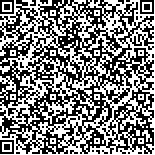本文已被:浏览 530次 下载 117次
投稿时间:2021-01-31 网络发布日期:2024-11-20
投稿时间:2021-01-31 网络发布日期:2024-11-20
中文摘要: 目的 分析白血病血小板输注无效的危险因素,探讨人类白细胞抗原(HLA)-Ⅰ抗体、转化生长因子-β1(TGF-β1)对血小板输注治疗白血病无效的预测价值。方法 回顾性分析2020年1月至2023年9月重庆医科大学附属巴南医院108例急性白血病(AL)患者的临床资料。所有患者均行血小板输注治疗,均检测HLA-Ⅰ抗体、TGF-β1表达情况。将受试者根据血小板输注效果分为无效组(38例)和有效组(70例)。比较HLA-Ⅰ抗体及TGF-β1表达水平,采用logistic回归分析AL血小板输注无效的危险因素。绘制受试者工作特征(ROC)曲线分析HLA-Ⅰ抗体、TGF-β1对AL血小板输注无效的预测价值。结果 108例患者共输注血小板1 575次,血小板输注有效率为68.00%(1 071/1 575)。Logistic回归结果显示,输血次数>6次、感染、活动性出血、细菌培养阳性、HLA-Ⅰ抗体阳性、输注前低血小板计数、低TGF-β1水平是AL血小板输注无效的危险因素(P<0.05)。ROC曲线分析显示,HLA-Ⅰ抗体、TGF-β1单独及联合预测AL血小板输注无效的AUC分别为0.748、0.712、0.812,灵敏度分别为83.20%、74.30%和93.80%,联合预测效能最高。结论 在AL血小板输注治疗中,HLA-Ⅰ抗体及TGF-β1联合检测对输注无效的预测有较高价值。临床可通过针对性的防治方案对存在相关危险因素的患者进行干预,以期进一步改善血小板输注效果。
Abstract:Objective To analyze the risk factors of ineffective platelet transfusion in leukemia, and explore the predictive value of human leukocyte antigen (HLA)-Ⅰ antibody and transforming growth factor-β1 (TGF-β1) for ineffective platelet transfusion in leukemia. Methods The clinical data of 108 patients with acute leukemia from January 2020 to September 2023 in Banan Hospital Affiliated to Chongqing Medical University were retrospectively analyzed. All patients were treated with platelet transfusion, and the expression of HLA-Ⅰ antibody and TGF-β1 was detected. The subjects were divided into ineffective group (38 cases) and effective group (70 cases) according to the effect of platelet transfusion.The general data, HLA-Ⅰ antibody and TGF-β1 of the two groups were compared, and the risk factors of ineffective platelet transfusion in leukemia were analyzed by logistic regression. The receiver operating characteristic (ROC) curve was drawn to analyze the predictive value of HLA-Ⅰ antibody and TGF-β1 for ineffective platelet transfusion in leukemia. Results A total of 1 575 platelets were transfused in 108 patients, and the effective rate of platelet transfusion was 68.00% (1071/1575). Logistic regression results showed that the number of transfusions>6 times, infection, active bleeding, low positive bacterial culture, positive HLA-Ⅰ antibody, platelet count before transfusion, low TGF-β1 level were risk factors affecting the ineffectiveness of platelet transfusion in leukemia patients (P<0.05). ROC curve analysis showed that the AUC of HLA-Ⅰ antibody and TGF-β1 a lone and combined predicting the ineffectiveness of platelet transfusion in leukemia patients was 0.748, 0.712, 0.812, and the sensitivity was 83.20%, 74.30%, 93.80%, respectively, with the combined prediction being the highest. Conclusion Positive HLA-Ⅰ antibodies and low TGF-β1 levels are risk factors for ineffective platelet transfusion in leukemia. Targeted intervention schemes can be used to intervene in patients with the above factors, in order to further improve the effect of platelet transfusion.
keywords: Leukemia Platelet transfusion Human leukocyte antigen Ⅰ antibody Transforming growth factor-β1 Efficacy Risk factors
文章编号: 中图分类号:R457.1 文献标志码:A
基金项目:
附件
| Author Name | Affiliation |
| YAN Ling, LIU Feng, HUANG Xin | Department of Blood Transfusion, Banan Hospital Affiliated to Chongqing Medical University, Chongqing 400000, China |
引用文本:
晏玲,刘锋,黄鑫.白血病血小板输注无效的危险因素及人类白细胞抗原-Ⅰ抗体、转化生长因子-β1的预测价值[J].中国临床研究,2024,37(11):1730-1734.
晏玲,刘锋,黄鑫.白血病血小板输注无效的危险因素及人类白细胞抗原-Ⅰ抗体、转化生长因子-β1的预测价值[J].中国临床研究,2024,37(11):1730-1734.
